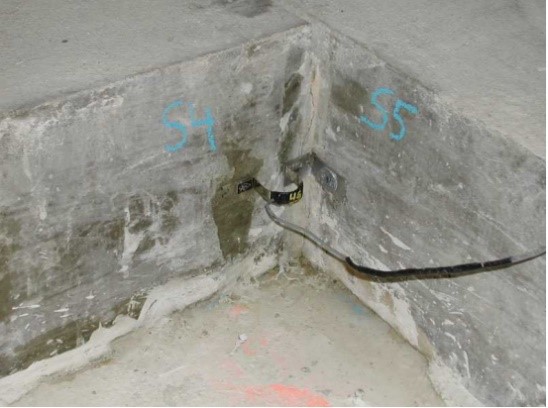Construction of CC2 Experimental test strip was initiated in November 2001 to study the effects of slab size and mix design on pavement curling, specifically during early age of the concrete. This study was motivated by the observations from previous NAPTF research (NAPTF Construction Cycle 1, CC1), in which premature rigid pavement cracking was observed due to thermal curling. Thus, CC2 experimental test strip evaluated different factors of rigid pavements, such as concrete mix design and components, slab dimensions and thickness, and the curing procedure.
The objectives of this CC2 research phase were:
- Comparison of PCC mix designs, slab length, and curing methods to minimize the risk of corner cracking;
- Investigate removal and replacement methods for rigid pavements;
- Measure pavement responses due to slab curling; and
- Evaluate rigid pavement performance under aircraft trafficking for development of pavement failure model.
The test strip trafficking was completed on April 11, 2002 after 8,087 repetitions. The 4.5 meter (15 feet) slabs exhibited fewer corner cracks for equal passes than the 6 meter (20 feet) slabs. Specifically, the findings from the CC2 Test Strip were:
- Larger rigid pavement slabs (20’ x 20’) experienced greater curling that the smaller rigid pavement slabs (15’ x 15’).
- Corner cracks developed in the 20’ x 20’ PCC slabs regardless of the concrete mixture used. No corner cracking was evident in the 15’ x 15’ PCC slabs. Mapping of each crack was completed and can be found here.
- 15’ x 15’ PCC slabs using the optimized mix developed edge cracks before corner cracks after 4,000 to 5,000 passes.

A full report of the testing and outcomes from CC2 Experimental Test Strip can be found here.